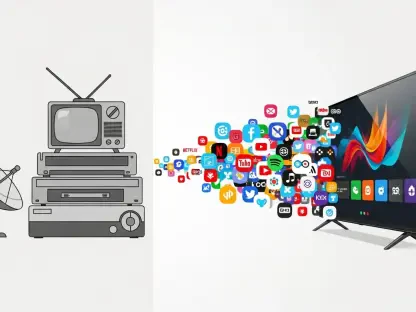The landscape of modern business communication is rapidly evolving, driven by technological advances and changing consumer expectations. As businesses strive to remain competitive, small enterprises are uniquely positioned to leverage these developments to revolutionize their communication strategies. By adopting innovative tools and practices, small businesses can enhance both internal dialogues and customer interactions, ultimately fostering growth in increasingly dynamic markets. This article explores the challenges small businesses face, the solutions available to them, and the trends shaping the future of business communication.
Understanding the Challenges
Communication Barriers in Small Enterprises
Small businesses often encounter a multitude of communication barriers, primarily stemming from limited financial resources and reliance on outdated systems. Legacy communication infrastructure can prove inadequate to meet the demands of fast-paced business environments that require agility and responsiveness. A lack of streamlined processes often leads to inefficiencies, miscommunications, and missed opportunities, restricting growth potential. Further complicating matters, small enterprises may struggle with integrating new technologies due to budget constraints or lack of technical expertise. Assessing these hurdles offers valuable insights into why traditional communication methods may fall short of effectively supporting small businesses in today’s digital age.
Impacts on Efficiency and Growth
The operational impact of inefficient communication is substantial, potentially stifling productivity and curtailing growth. Poor communication infrastructure can result in delays in decision-making, errors in task execution, and a general decrease in employee morale—factors that collectively dampen business performance. Streamlining communication channels is crucial as it enhances organizational efficiency, enabling swift responses to market changes and fostering innovation. Small businesses that prioritize effective communication development are better equipped to navigate competitive landscapes, meeting customer expectations and achieving sustainable growth. By addressing these underlying issues, enterprises can sidestep bottlenecks, focus on strategic initiatives, and make concerted efforts towards expansion.
Embracing Modern Solutions
Leveraging Technology for Success
Technological advancements present unparalleled opportunities for small businesses to modernize their communication frameworks. Digital tools, including collaboration software and messaging platforms, offer tangible benefits over cumbersome traditional systems, which often require heavy infrastructure investments. With cloud-based technology, small businesses can access powerful communication tools that simplify operations and boost productivity, all while minimizing costs. This transition enables seamless remote work, cross-functional collaboration, and real-time communications, key components for competitive positioning. The embrace of digital tools is a strategic move, allowing enterprises to streamline processes, facilitate agile responses, and harness technology as a driving force for success.
Cloud-Based Systems and VoIP
Cloud-based systems and Voice over Internet Protocol (VoIP) solutions are revolutionizing communication by providing reliability, affordability, and scalability tailored to small business needs. These modern communication platforms eliminate geographical and operational constraints, offering a flexible and cost-effective alternative to traditional phone systems. Cloud technology supports high-quality voice communications alongside integrated features such as video conferencing, messaging, and file sharing—all accessible from any device and location. VoIP, in particular, reduces overhead costs, ensures consistent connectivity, and integrates effortlessly with other business applications, significantly enhancing operational efficiency. By adopting such versatile communication solutions, small businesses can efficiently manage interactions across multiple channels, aligning communication strategies with current business demands.
Choosing the Right Tools
Simplicity and Usability
Selecting the right communication tools necessitates prioritizing simplicity and usability—key attributes that facilitate seamless implementation and usage. Clarity in design and functionality empowers small business owners and employees to manage communication platforms independently, minimizing reliance on IT professionals. User-friendly interfaces, intuitive controls, and straightforward setup processes contribute to a productive environment where staff can focus on core business tasks rather than resolving technical issues. This approach not only enhances operational efficiency but also reduces costs associated with dedicated IT support. Simplicity fosters a positive user experience, crucial for maximizing productivity and ensuring that technology serves as an asset rather than a hindrance.
Importance of Scalability
Scalability must be a foremost consideration when acquiring communication tools, particularly as businesses anticipate growth and expansion. Flexible subscription models allow enterprises to customize communication packages according to evolving needs, bridging gaps between current capabilities and future expectations. As business operations expand, scalable systems provide the advantage of adjusting features, user counts, and functionalities without extensive modifications or financial strain. This flexibility ensures sustainable expansion, facilitating seamless growth transitions while maintaining operational coherence. Scalable communication solutions not only align with immediate requirements but also support strategic long-term planning, enabling businesses to adapt and thrive in dynamic markets.
Enhancing Customer Interactions
Efficiency in Client Engagement
Effective communication plays a pivotal role in enhancing customer relationships, enabling small businesses to deliver efficient and personalized client engagement. Today’s businesses require advanced call management systems that allow for streamlined interactions, quick responses to queries, and problem resolution, all contributing to improved customer satisfaction and loyalty. Communication tools that support a cohesive omni-channel approach enable businesses to integrate various communication mediums—such as phone, email, and social media—ensuring consistency in messaging and engagement. Through proactive and responsive communication, businesses can nurture lasting customer connections, reinforcing trust and loyalty.
Integrating CRM Systems
Integrating Customer Relationship Management (CRM) systems into communication infrastructure offers small businesses substantial benefits in managing client data and delivering personalized services. CRM integration allows businesses to track client interactions, preferences, and purchase histories, equipping them with insights to tailor communication strategies and enhance engagement quality. By leveraging CRM tools, businesses gain the ability to provide targeted recommendations, address client needs effectively, and increase upsell opportunities. Moreover, the seamless gathering and analysis of customer data streamline operations, supporting data-driven decision-making and growth initiatives. This integration fortifies communication ecosystems, nurturing deeper customer relationships and augmenting service delivery.
Future Communication Trends
Innovations Shaping the Future
Emerging communication technologies promise to further transform how small businesses interact both internally and with customers. Artificial intelligence (AI) integration is poised to redefine communication landscapes, offering tools like chatbots and predictive analytics that enhance customer service and decision-making processes. Additionally, the emergence of augmented and virtual reality presents opportunities for immersive experiences, particularly in training and client interactions. Small businesses must remain vigilant to these innovative trends, choosing relevant technologies that align with strategic goals and operational requirements. By embracing evolving solutions, businesses can anticipate industry shifts, optimize communication strategies, and maintain competitive advantages.
Staying Competitive
The realm of modern business communication is undergoing swift transformation, fueled by technological breakthroughs and shifting consumer demands. To stay competitive, small enterprises find themselves in a promising position to harness these changes to revolutionize how they communicate. By integrating cutting-edge tools and innovative practices, small businesses have the opportunity to boost both internal conversations and customer interactions. This strategic enhancement not only aids in keeping pace with rapid market changes but also stimulates growth in an increasingly dynamic business environment. Understanding these trends can offer small businesses a competitive edge, allowing them to not only meet but exceed consumer expectations.









